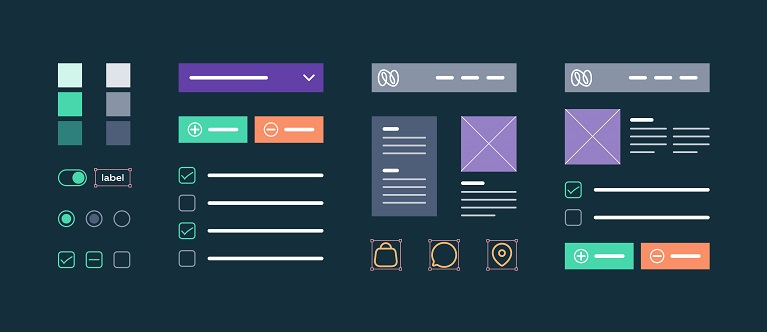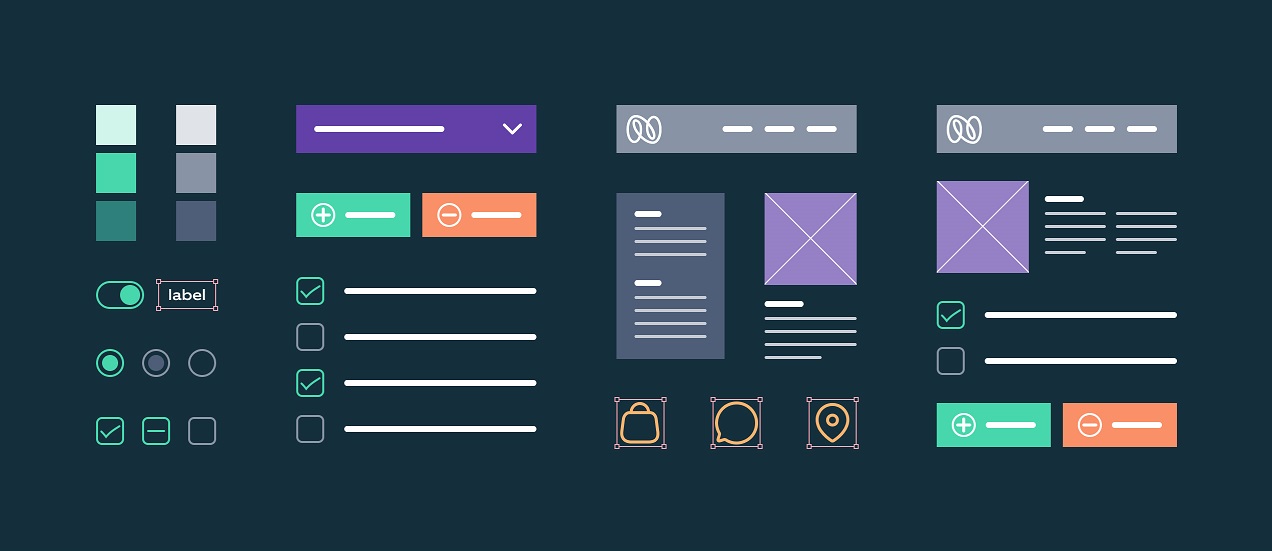Product teams today require scale, efficiency, and consistency in their work. However, in the pursuit of excellence, the critical role of systematic design in product development is often overlooked, which has a long-term impact on overall KPIs. Design systems can save the day here — but what is a design system? A brand book? a UI kit? a set of guidelines? Even more!
A design system is all about solving complex user problems with beautiful and meaningful solutions — building a positive user experience, which results in people falling in love with the product.
It is also a system that connects design and development. Not only does a design system create a visual language with colors, fonts, and point sizes, all of these components are also built-in code. Designers and developers no longer need to start from scratch because they have a ready-to-go library of components, patterns, and templates for quickly and easily prototyping UI. It is a single source of truth that allows cross-disciplinary teams to design, develop, and realize a product with consistency, scale, and speed.
Contrary to a style guide, a design system is not a static deliverable. It is an ever-changing system that constantly evolves with the product, the tools, and new technologies.
Why invest in a design system for enterprise?
Whether a startup, a small company, or an enterprise organization, a design system can benefit any product team. That said, enterprises reap the most significant benefits because they are already designing at scale.
Faster product design and development
New products take a long time to build, which can lead to a slow time to market, and as a result – missed opportunities. Those projects often go over budget or are not delivered at all. It also takes too long to test innovative ideas.
With the design system at their hands, both designers and developers can spend less time creating repeating design elements and pieces of code. They can work faster because they're not starting from scratch.
Going from ideation to hi-fidelity takes few days, not months which means testing and validating ideas is much faster and, therefore, more cost-efficient.
A major US retailer created a design system and now builds web apps 10x faster with 1/4 of the team size.
Consistent and cohesive product design
"Consistency is one of the most powerful usability principles: when things always behave the same, users don't have to worry about what will happen. Instead, they know what will happen based on earlier experience." – Jakob Nielson.
Inconsistency in a product's interface leads to frustrated users — and is often perceives as poor quality, which lowers trust for the brand.
When designers have templates, reusable components, and patterns, they can focus on solving the critical customer challenges instead of re-creating a variation of the button. Developers, at the same time, have a central codebase where all the components and elements live. Reusing the code that is already available allows building more consistent products faster. As a positive effect, code becomes cleaner and fewer bugs appear. Usability improves at scale.
Reduced the cost of design and development
Finding and fixing a software problem (e.g., a usability issue) during the post-launch phase is 100x more expensive and 30x slower than finding and fixing it during the requirements and design phase.
Both designers and developers spend less time designing and writing code for repeatable elements with a design system. As a result of this – the cost of design and development reduces dramatically. Reduced cost of implementation means that the company can invest money in discovering critical user problems and creating innovative solutions for them.
Lloyds Bank's design system saves around £190,000 per project and has helped save an estimated £12.7mil over two years.
A shared language between design and dev
Investing in a design system means investing in design to dev collaboration. A well-made design system creates a common language for both teams and makes the handoff process very smooth.
Designers create specs and do the manual handoff for the critical parts of the UI, while the design system will do the rest for them.
Taking advantage of design tokens and variables helps maintain the same level of quality communication and will make the process much more efficient.
Atlassian's Atlaskit Figma plugin saved designers 2260 hours a year.
Easier testing, feedback, and iteration
Launching new features to production is expensive and takes a lot of time. The cost of implementing a new idea can be massive.
It is more cost-effective to test the initial ideas with the stakeholders and users of the product while the concept is in the discovery and design phase.
Design systems allow faster iterations in high-fidelity and testing with users while keeping the look & feel and the functionality of a real product. Reduced cycle time allows improved experiences to make it into the product faster, increasing feedback and further iteration.
ExxonMobil's Unity design system led to a 16x increase in project velocity.
Effortless updates to production
Making a single update to a design element — like changing a button seems to be an easy job. But managing that update throughout a suite of products or features can take hundreds of hours.
With a design system, pushing the updates across products becomes effortless. Every change to the design system updates across all screens and workflows and quickly makes it to production.
Future-friendly foundation
Since modular design systems allow for quick assembly of an interface, change and experimentation are quickly adopted. Therefore, they support well the agile way of working.
Westpac's design system increased user interface design velocity by 700% and reduced production effort by 1,600%
There is no question — investing in a design system will pay you back quickly! It will bring the most value to your product's user experience — create efficient employees, happy customers, all while increasing the bottom line.
Ready to build your design system?
Let's talk.





